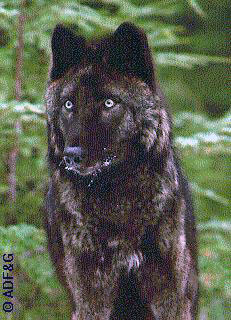
Groups file Emergency ESA Petition after Feds’ Refusal to Stop POW Wolf Hunt
September 15 2015
“The two agencies are continuing to allow wolves to be killed, despite a deep population decline over the past decade that places this important population in immediate danger of extinction,” said Gabriel Scott, Alaska legal director for Cascadia Wildlands. According to these conservation organizations, in the mid-1990s the Prince of Wales area had about 300 wolves. However, a June population estimate by the state’s fish and game department found a mid-range estimate of only 89 wolves for 2014, and perhaps as few as 50. But because this number did not factor in the 29 wolves killed in legal hunts over the winter, or poaching (which may be substantial), the population may now be a scant few dozen. Some reproduction may have occurred to offset losses, but only one den was documented, and the proportion of females in the population has fallen to just 25 percent. In response to this dire situation, the conservation organizations in July petitioned the subsistence board and Fish and Game to cancel the hunting and trapping seasons. “Allowing another season of hunting and trapping on Prince of Wales Island is like sucker-punching a heart-attack victim,” said Noah Greenwald, endangered species director at the Center for Biological Diversity. “Unless the emergency protection provision of the Endangered Species Act is applied, these unique wolves are in great danger of disappearing forever.” The Alaska Department of Fish and Game set the total at nine wolves that can be killed during the three approved seasons, but total mortality may be worse because of poaching according to these conservation organizations. The family structure of wolves also means the loss of the alpha female or male, or both, can dissolve the pack, increasing population decline. The current population’s low number of females makes this an urgent concern. “Wolves on Prince of Wales have been pushed to their limit, and the hunting must stop now,” said Larry Edwards, Greenpeace forest campaigner in Sitka. “Leave the population alone so it can rebound. The approved seasons can snuff them out ? if not immediately, then through inbreeding ? especially when poaching is taken into account. This spring, Fish and Game visited about a dozen known den sites and found only one active den, with only one pup. This indicates wolf packs have been wiped out or fragmented, causing the population crash.” An Alaska Department of Fish and Game staff report for the subsistence board, reviewing the closure request made in July, considered the established quota of nine wolves to be conservative and sustainable. “We think that conclusion is ludicrous,” Scott said. “The report failed to discuss the biological substance of our request, most importantly about the genetic impact on this very small population of wolves.” According to these six organizations, contributing to the wolf population crash are 3,000 miles of logging roads in the area, as well as habitat destruction from decades of logging. The U.S. Forest Service’s ongoing Big Thorne timber project will log 6,000 acres of old-growth forest and build or rebuild over 80 miles of road. The requested emergency Endangered Species Act listing would help preserve the Prince of Wales wolf population until, at year-end, the U.S. Fish and Wildlife Service will decide whether to protect the subspecies for the longer term under the ESA. In 2011 the Center for Biological Diversity and Greenpeace petitioned the Service for that listing. Last year the Service found that the listing “may be warranted.” Alexander Archipelago wolves, a subspecies of gray wolves, den in the roots of old-growth trees in the Tongass National Forest. The six organizations requesting the protection are: Alaska Wildlife Alliance, Cascadia Wildlands, Center for Biological Diversity, Greater Southeast Alaska Conservation Community, Greenpeace and The Boat Company.
On the Web:
Edited by Mary Kauffman, SitNews
Source of News:
|
|||
